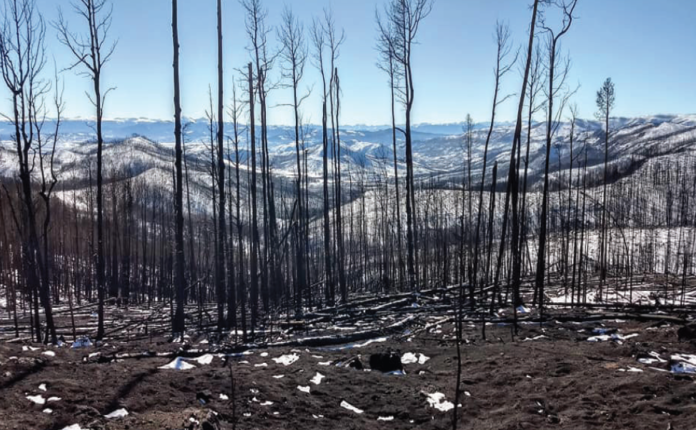
by Marissa Lorenz
Watershed recovery has been a focal piece in fire recovery planning as Grand County and its many partners attempt to evaluate the needs and subsequent action steps for “post-fire watershed restoration and planning of projects that mitigate threats to life and property due to post-fire flood, sediment or debris” in the burn area left by the East Troublesome Fire.
Grand County Water Quality Specialist Katherine Morris has been charged with heading the task force responsible for such concerns, and she has been reporting regularly to the Board of County Commissioners (BOCC). This week, she presented an updated timeline of Emergency Watershed Protection (EWP) steps and an organizational outline to the Board.
Morris detailed a collaboration of water interests–including Middle Park Conservation District, the Three Lakes Watershed Association, the Colorado River Water Conservation District and more than 40 other federal, state and local organizations–led by Grand County and Northern Water to “ensure the most efficient and effective coordination of emergency watershed restoration efforts in areas of Grand County affected by the East Troublesome Fire of October 2020.”
Under the proposed plan, burn recovery areas and efforts will be divided into two regions. Northern Water would “sponsor” and lead activity in area A, which consists of everything tributary to and above Windy Gap Reservoir, including Willow Creek and all of its tributaries. Grand County would be responsible for area B, in the East Troublesome area and those areas “outside of the burn perimeter that are downstream of East Troublesome, Troublesome Creek, Corral Creek, Drowsy Water, et cetera.”
An EWP Damage Survey Report (DSR) has been launched, with “desktop work” scheduled the first week of February, followed by a week of field work and another week for fine-tuning the report.
“Residents can expect to see teams of field personnel conducting these assessments. Private properties within and around the burn area will be considered in these surveys. Specific mitigation projects will not be identified at this stage of the process,” according to a related press release.
The DSR will be submitted to the National Resource Conservation Services (NRCS), a branch within the USDA, and mitigation work should then take place between March 1 and October 22.
Morris emphasizes that projects will not be planned or completed without landowner approval and reminds “the public and contractors that no work will be reimbursed without a contract with NRCS or one of the partner agencies.”
For more information or questions regarding watershed recovery efforts, contact project leaders, Grand County at watershedrecovery@
co.grand.co.us or Northern Water at watershedrecovery@ northernwater.org.








